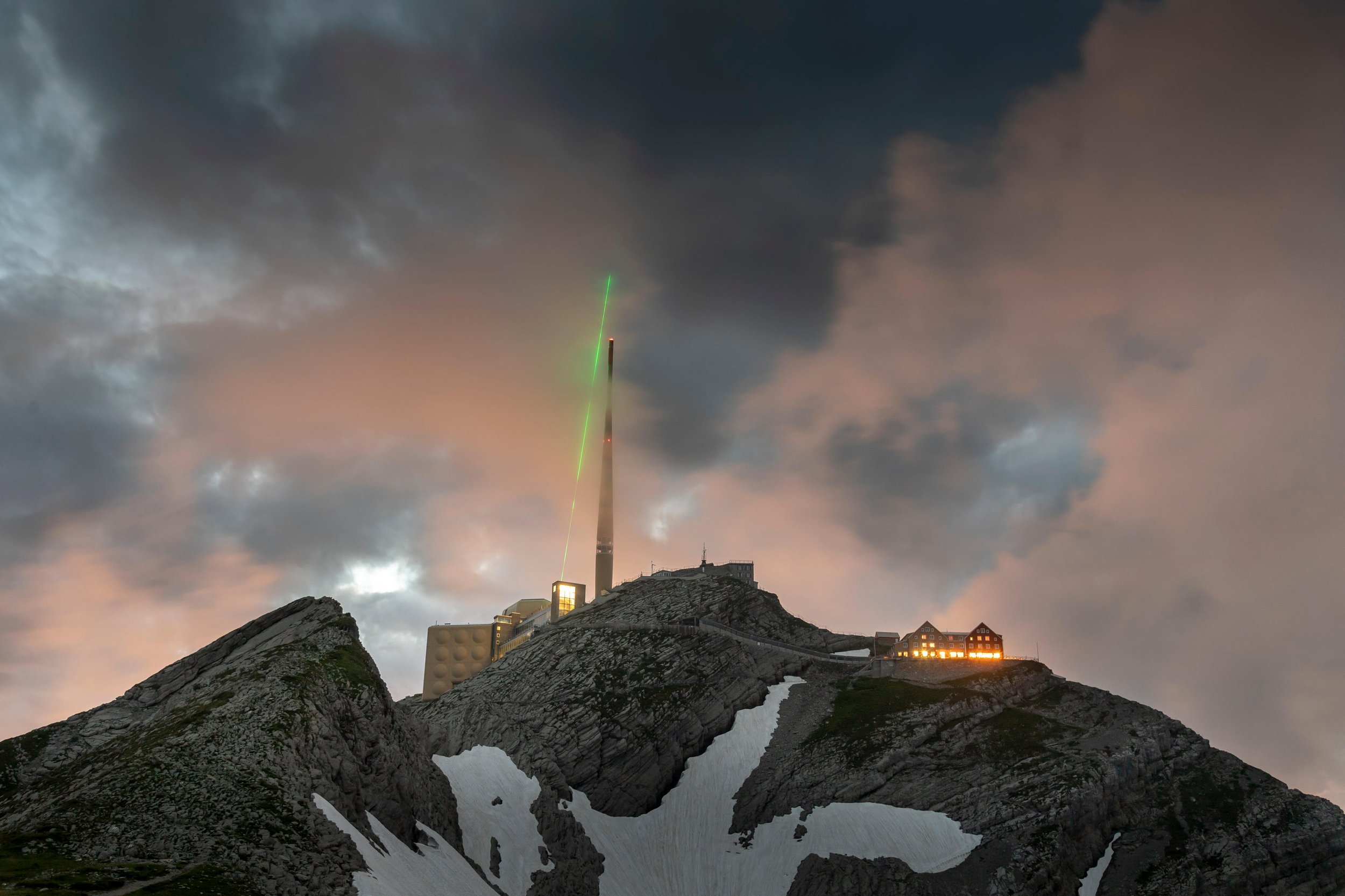Allison Parshall | Multimedia Science Journalist
-

Asexuality Is Finally Breaking Free from Medical Stigma | Scientific American
New research on asexuality shows why it’s so important for doctors and therapists to distinguish between episodes of low libido and a consistent lack of sexual attraction (January 2024 feature)
-

Risky Giant Steps Can Solve Optimization Problems Faster | Quanta Magazine
New results break with decades of conventional wisdom for the gradient descent algorithm.
-

‘Unbelievable’ Spinning Particles Probe Nature’s Most Mysterious Force | Scientific American
The strong force holds our atoms together. Scientists may have observed its small-scale fluctuations for the first time
-

Peach Fuzz Is Pantone’s Color of the Year—And It’s Everywhere in Nature | Scientific American
This warm, fuzzy color can be found all over the natural world, from land to sea to space
-

Underground Climate Change Is Weakening Buildings in Slow Motion | Scientific American
Hotspots beneath cities deform the ground, causing important infrastructure to crack under stress (Appeared in October 2023 issue)
-

Bacteria Make Decisions Based on Generational Memories | Scientific American
Bacteria choose to swarm based on what happened to their great-grandparents (Appeared in February 2024 issue)
-

After a Quantum Clobbering, One Approach Survives Unscathed | Quanta Magazine
A quantum approach to data analysis that relies on the study of shapes will likely remain an example of a quantum advantage — albeit for increasingly unlikely scenarios.
-

What Are Puberty Blockers, and How Do They Work? | Scientific American
Decades of data support the use and safety of puberty-pausing medications, which give transgender adolescents and their families time to weigh important medical decisions
-

A Brain Scanner Combined with an AI Language Model Can Provide a Glimpse into Your Thoughts | Scientific American
New technology gleans the gist of stories a person hears while laying in a brain scanner
-

New Entanglement Results Hint at Better Quantum Codes | Quanta Magazine
A team of physicists has entangled three photons over a considerable distance, which could lead to more powerful quantum cryptography.
-

The Cryptographer Who Ensures We Can Trust Our Computers | Quanta Magazine
Yael Tauman Kalai’s breakthroughs secure the digital world, from cloud computing to our quantum future.
-

Space Farmers of the Future May Grow Fungi, Flies and Microgreens | Scientific American
Here’s how the winners of NASA’s Deep Space Food Challenge are making food out of thin air
-

Deadly Bacteria in Eyedrops May Spread from Person to Person | Scientific American
Infections of a new strain of Pseudomonas aeruginosa that have led to blindness and death highlight the worsening antibiotic resistance crisis
-

Discovery of Elusive ‘Einstein’ Tile Raises More Questions Than It Answers | Scientific American
A surprisingly simple answer to a mathematical puzzle intrigues the math world (Appeared in June 2023 issue)
-

AI Can Re-create What You See from a Brain Scan | Scientific American
Image-generating AI is getting better at re-creating what people are looking at from their fMRI data. But this isn’t mind reading—yet
-

Plant Cell Parts Turn into Glass to Soak Up Sun | Scientific American
Chloroplasts’ choreography keeps plant cells powered (Appeared in May 2023 issue)
-

Northern Lights Dance across U.S. because of ‘Stealthy’ Sun Eruptions | Scientific American
A severe geomagnetic storm created auroras that were visible as far south as Arizona in the U.S.
-

How My AI Image Won a Major Photography Competition (Q&A) | Scientific American
Boris Eldagsen submitted an AI-generated image to a photography contest as a “cheeky monkey” and sparked a debate about AI’s place in the art world
-
![Illustration of a person smelling a rose. Inside their brain is an abstract representation of possible smells, like hibiscus, lily, and rose. The rose section is lit up in red. [Credit: Kristina Armitage/Quanta Magazine]](https://images.squarespace-cdn.com/content/v1/62acd3b278f5350d6ebf5a8b/9b8b690f-62aa-4760-98f0-f85669e0eba8/Digital-Smell-Model_2880x1620_Lede-scaled.jpg)
Machine Learning Highlights a Hidden Order in Scents | Quanta Magazine
Efforts to build a better digital “nose” suggest that our perception of scents reflects both the structure of aromatic molecules and the metabolic processes that make them.
-

Scientists Fire Lasers at the Sky to Control Lightning | Scientific American
Laser beams could be used to deflect lightning strikes from vulnerable places such as airports and wind farms. (Appeared in April 2023 print issue)
-

A Common Antibiotic Could Prevent Deaths from Childbirth Complications | Scientific American
One in three cases of maternal sepsis can be prevented with a single dose of antibiotic, a study in low- and middle-income countries shows
-

Rare, Dust-Shrouded Dying Star Revealed in New JWST Image | Scientific American
Before exploding as supernovae, massive Wolf-Rayet stars spew gas and dust into space, seeding the formation of future stellar and planetary systems
-

Could the Zombie Fungus in TV’s 'The Last of Us' Really Infect People? | Scientific American
The pandemic fungus in the television program The Last of Us is real. But an expert says other fungi are much more threatening to humans
-

Colliding Supermassive Black Holes Discovered in Nearby Galaxy | Scientific American
These merging supermassive black holes are among the closest ever observed and could help unlock deeper secrets of cosmic history
-

The Computer Scientist Peering Inside AI’s Black Boxes | Quanta Magazine
Cynthia Rudin wants machine learning models, responsible for increasingly important decisions, to show their work.
-

New Color-Changing Coating Could Both Heat and Cool Buildings | Scientific American
A thin film can switch from releasing heat to trapping it, and wrapping the coating around buildings could make them more energy-efficient
-

Living with Lead Creates Antibiotic-Resistant 'Superbugs' | Scientific American
People are infected by bacteria that, after contacting heavy metals, develop drug-resistant traits
-

Inside Ancient Asteroids, Gamma Rays Made Building Blocks of Life | Quanta Magazine
A new radiation-based mechanism adds to the ways that amino acids could have been made in space and brought to the young Earth.
-

Wastewater can track viruses like Covid-19 — Can it do the same for superbugs? | Inverse
A pandemic program could help reveal the true threat of antibiotic resistance to public health.
-
![A girl in VR goggles immersed in a digital world, digital illustration [Credit: Kurniaindah, Vecteezy.com | Free license]](https://images.squarespace-cdn.com/content/v1/62acd3b278f5350d6ebf5a8b/1656523001143-V3VYJ5FOYNXKRP47F42Q/vecteezyvr-illustrationki0421_generated.jpg)
Why an assault on your VR body can feel so real | Scienceline
Our brains are easily fooled into taking ownership of a virtual body, decades of psychology research shows
-

Mysterious "milky seas" captured on camera for the first time | Inverse
You’ve never seen anything like it.
-

Overcoming the ick factor of lab-grown meat | Scienceline
Cultured meat promises to be better for animals, public health and the planet. Will we eat it?
-

Scientists discovered the biggest bacteria ever, and it's the size of an eyelash | Inverse
This massive bacteria is breaking all the rules
-
![A pile of multi-color classic Crocs [Credit: Liz Jones | CC BY 2.0]](https://images.squarespace-cdn.com/content/v1/62acd3b278f5350d6ebf5a8b/b155e266-0a5a-42dc-90d6-21e0cb7c3754/1094586860_8039314e99_o+%281%29.jpeg)
Crocs are here to stay. Can they lighten their carbon footprint? | Scienceline
And what are the iconic clogs even made of, anyway?
-

518 million-year-old fossil worm reveals direct connection to human evolution | Inverse
The ancestor we deserve.
-

Essential molecules for life discovered near center of Milky Way — again | Inverse
Scientists have found more of the ingredients for life as we know it in a gaseous cloud toward the center of the Milky Way
-

To kill a superbug | Scienceline
Scientists are recruiting phages, bacteria’s natural predators, as the antibiotic resistance crisis worsens.
-

Yes, there are mites living on your face — and they can poop, new study finds | Inverse
Our first look at their genome reveals new details of their microscopic lives
-

Ancient stalagmites point to a massive drought that upturned 6th century Arabia | Inverse
The drought may have contributed to the rise of Islam.
-

A single gene could stump a deadly parasitic infection | Inverse
The answer could lie in the “junk” portion of the parasite’s DNA.
-

AI-powered “patients-on-a-chip” could hold the future of drug development | Scienceline
With microscopic human tissues and advanced algorithms, testing new drugs in humans could become more efficient
-

The next-next-generation of exoplanet astronomy | Scienceline
As the long-awaited launch of the James Webb Space Telescope approaches, astronomers just picked its successor’s successor.
In Translation
Spanish / Español:
El cambio climático subterráneo debilita los edificios | Arquitectura Viva
French / Français:
Les odeurs, aux sources de la vie | Cerveau & Psycho
L’IA peut-elle lire dans nos pensées ? | Cerveau & Psycho
Les astéroïdes, creuset des acides aminés | Pour la Science
German / Deutsch:
(K)ein Job für Quantencomputer | Spektrum.de
Wenn die KI ins Hirn blickt | Spektrum.de
Starke Wechselwirkung wirbelt die Theorie durcheinander | Spektrum.de
Italian / Italiano:
Il telescopio spaziale Webb ha fotografato una rara stella morente in una nube di gas e polvere | Le Scienze
Un fungo può causare una pandemia? | Le Scienze
L'intelligenza artificiale rivela l'ordine segreto del mondo degli odori | Le Scienze
Polish / Polski:
Życie bez seksu | Pulsar / Świat Nauki
Śmierć gwiazdy | Pulsar
Po prostu nieskończoność | Pulsar
Laserowy kontratak | Pulsar
Mandarin / 中文:
Portuguese / Português:
